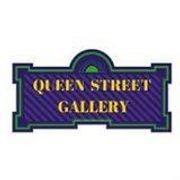A Beginners Guide to Collecting Vintage Posters

Posters are a unique medium where art, graphic design, and creative interests intersect. There are posters for many subjects and types of collectors. Whether you are an avid art fan or just beginning, collecting vintage posters can be a fun hobby. Here are some tips for starting a collection.
How to Start
Are you going to collect, sell, or both? If you are going to sell, you need to know what will get you the best return on investment. Age and rarity will increase a poster's value, whether you are buying or selling. Movie posters from before the 1950s are rare, as are limited edition posters from many artists. You may also want to focus on classic movie posters or on select artists when starting out. Or, start by buying what you like. Don't get too caught up in the details. It is easier said than done, but if you see a piece that resonates with you or will fit perfectly in the space allotted, buy it. You can still collect and sell.
What to Watch For

There have been many advancements in color printing in the last decade. A trend that you will rarely find in classic posters are neon, electric color shades. When looking for vintage posters, look for colors that can be produced by a 4-color printing process or pantone, a type of color swatch made up of specialty inks.
You also won't find the same fonts and types in newer posters. Vintage posters use off-set lithograph or analog typesets. Type and colors should be crisp and clear. If they look fuzzy, pass on those. A vintage piece will have a sophisticated patina.
Beware of Forgery
Forgery is becoming easier and more commonplace. Authenticity is important when shopping for vintage posters. Try looking for well-known auctions and true collectors of a particular artist or type of poster, such as exhibition posters, for example. These collectors have dedicated a large amount of time and effort to learning all they can about a particular artist or style and knowing the hallmarks of those works. A "Catalouge Raissone" is a book with an inventory of every print done by a particular artist. If yours isn't in the book, it is likely a fake. Many collectors have these, or you can buy one for yourself.
Poster standard sizes are 27" by 41" pre-1990, and the post-1990 size is 27" by 40". A forgery will likely be more than a quarter inch off those numbers. Also, know the paper won't be brilliant white, and there won't be a reverse image on the back.
Whether you are a seasoned collector or a beginner, Queen Street Gallery in Martinsburg, WV, has what you need. Not only do they have everything from art to artifacts, they also feature custom framing services, making them a one-stop shop for your home decor needs. To find out more or to get a free quote on a custom framing project, visit the website or call (304) 263-9495 today.
About the Business
Have a question? Ask the experts!
Send your question

